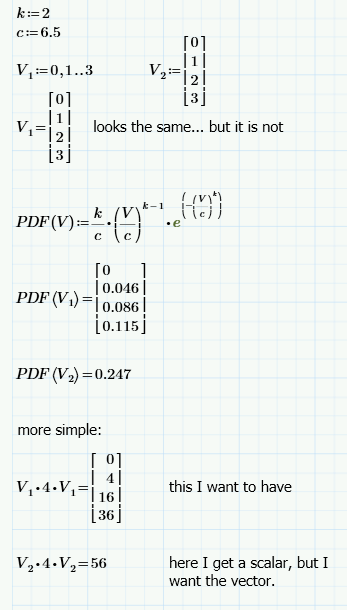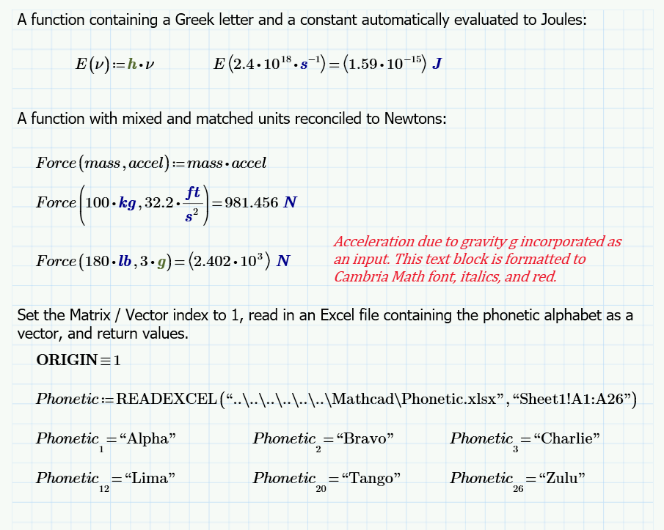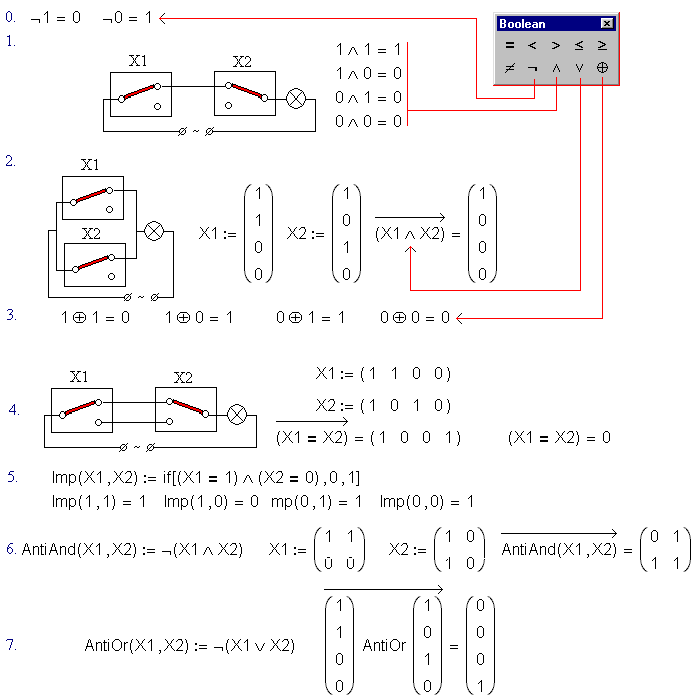

Explicit calculations enable users to replace entries with variables in equations to record and confirm the right values are being utilised in the end calculations.

Mathcad vectorize software#

I’m rapidly discovering that Tables are an underused gem that facilitates calculations and documentation. One aspect I particularly liked about this spreadsheet were the Tables that symbolically defined velocities and ratios based on the stationary component. I was expecting someone to use a program with if and else statements to compute the gear ratios based on the user-selected configuration. This involves some nice use of symbolic evaluation with the simplify keyword.Īs mentioned above, Adhariya’s solution employed extensive text in documentation, vectors with symbolic evaluation for sets of equations, a Combo Box, and programs. This enabled him to complete the worksheet by calculating the number of teeth of the various members and the gear ratio. The vector for the diameters is constructed via the vectorize operator, which is a nice touch.īert then calculated the normal modules using the built-in Floor function to round a number down, and reset the variables numerically using the clear.sym function. Bert's Solutionīert employs multiple vectors to define the configuration of the system, such as gear teeth, mating teeth, diameters, and rotational speeds. Now that we’ve looked at some of the common techniques, let’s discuss some of the aspects that make each worksheet special. Bert defined a single-row matrix as a vector of a system of equations, and then symbolically evaluated the system using the solve and float keywords to calculate rotational speeds. Adhariya used a function defined as a vector of equations, and then symbolically evaluated the system of equations using the solve keyword. One thing I like about the two challenges so far is that I have learned new techniques. Terry used the Solve Block to calculate an angle. It’s a great construct for either solving for or optimizing variables in a system of equations. The Solve Block is my favorite tool in Mathcad. Solving for Multiple Variables Simultaneously. Bert’s program issued a warning for an invalid configuration. Given the open-ended problem and the various configurations, I figured it was pretty much impossible to devise any solution that didn’t use programs. Adhariya’s Combo Box allows you to select the stationary member. Bert used three Combo Boxes to specify the Sun, Planet Carrier, and Ring as either driven, driving, or stationary. Even though the input/output Combo Box functionality was just introduced in Prime 7, Bert and Adhariya incorporated them into their solutions. Later, I will discuss another aspect of Terry’s worksheet that really set it apart for communicating results.Ĭombo Boxes. Terry inserted images into his worksheet.

Bert and Adhariya made excellent use of Text Blocks and Text Boxes to document their solution process. Before we talk about what they did differently, let’s talk about similarities.ĭocumentation. I guarantee there are techniques in each of them that you can learn from. If you haven’t downloaded their worksheets yet, I strongly advise that you do. Three community members submitted solutions to the challenge: Bert, Adhariya, and Terry. Depending on the choices, the resulting gear ratio can be overdrive, reduction, or reverse reduction. This challenge is tough because planetary gears can have different components as the input, the output, and the stationary member.


 0 kommentar(er)
0 kommentar(er)
